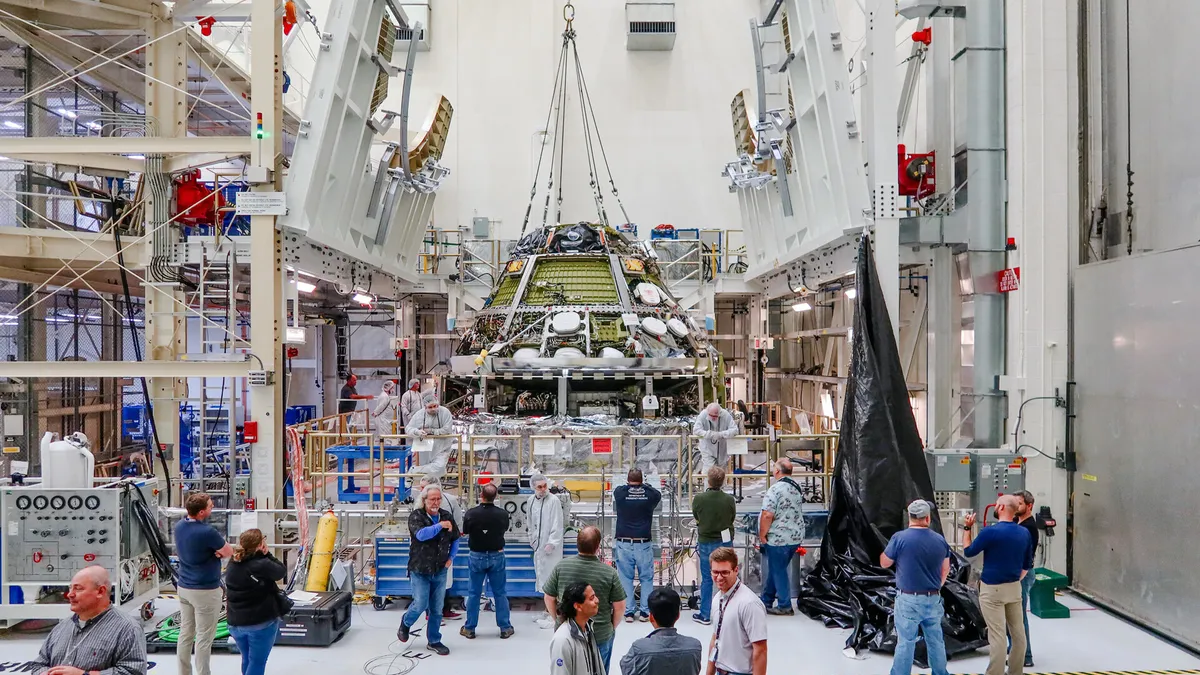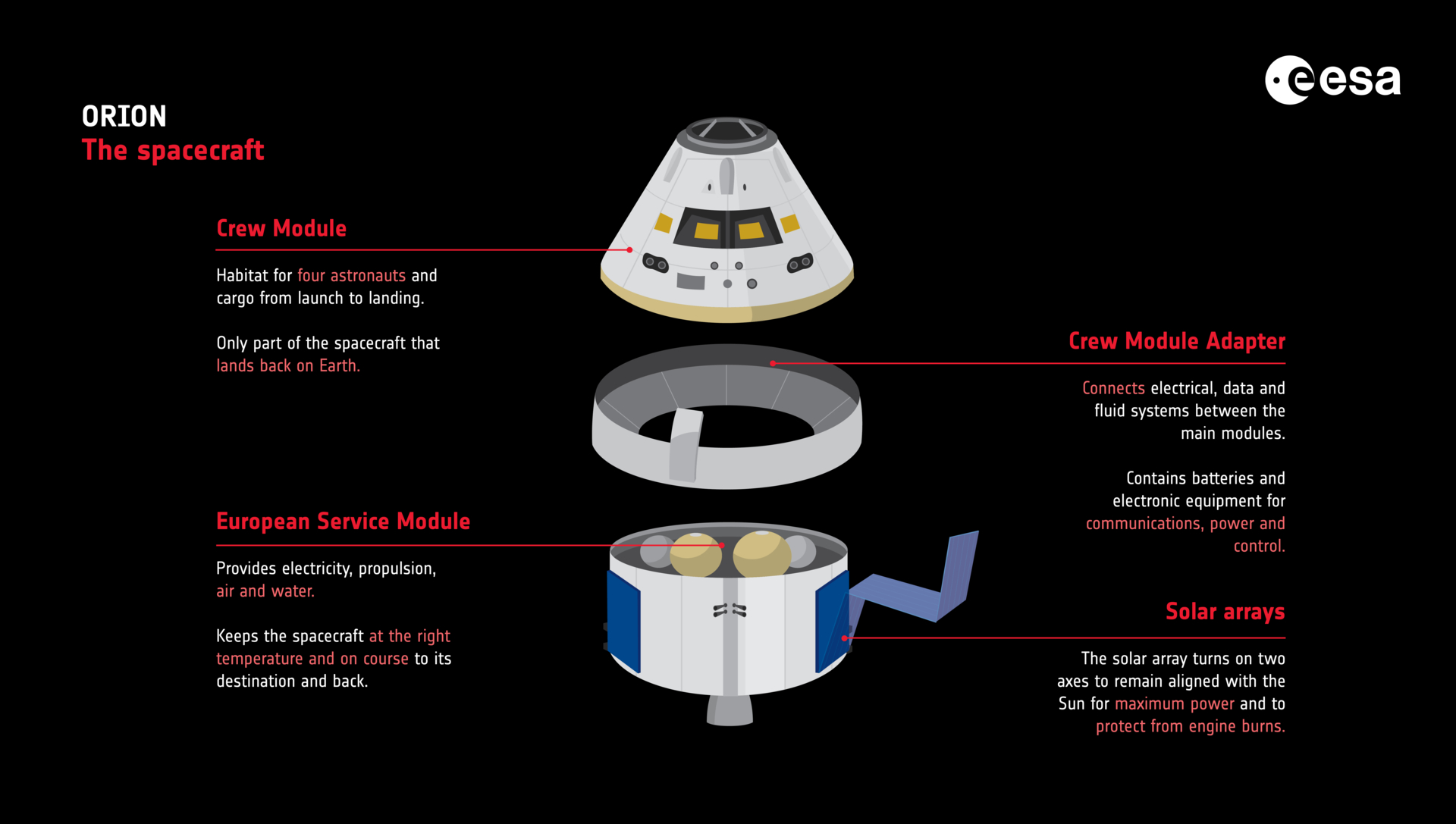
NASA has shown how it is assembling the first lunar spacecraft for astronauts in 50 years, the Orion, for the Artemis 2 project, which is scheduled to fly around the moon in 2024 with a crew of four.
On October 19, the spacecraft was connected to the service module. In the future, it will undergo a rigorous series of tests to prepare the ship for a long lunar journey, the agency said in a statement.
“The team will turn on the combined crew and service module for the first time,” NASA said on October 23. “After completion of the test, Orion will begin testing the high-altitude chamber, in which the spacecraft will be in conditions as close as possible to those it will experience in the vacuum of deep space.”
The Orion spacecraft contains a European Space Agency (ESA) service module built by Airbus Defence and Space, which provides electricity, propulsion, air and water; a US crew module by Lockheed Martin, which will accommodate four astronauts; and a US crew module adapter that connects the service module to the crew module and integrates their electrical, information and energy systems.
ESA’s service module arrived at NASA’s Kennedy Space Center about two years ago, in October 2021, and was tested before a major connection at the Neil Armstrong Operations and Control Building, near the launch pad in Florida.
“Two important tests include the thermal cycle test – which assesses how well the spacecraft will withstand extreme temperatures – and the direct-field acoustic test (DFAT), which assesses how well the spacecraft will withstand vibrations during a launch to the Moon“, ESA wrote in a statement on Tuesday (October 24), noting that the module connection is an important milestone, as the US and European-made modules are now interfacing with each other.
The crew and service modules are connected at six points around the heat shield of the crew module, ESA officials added.“Data and power connections, as well as pipes for fluids between sections, are routed around the heat shield, not through it,” they added.
In 2024, the ESA said in a statement, there will be even more construction stages: adding solar panels to the wings, filling the tanks with fuel, then connecting the completed Orion to the launch abort system, which will take the astronauts to safety in the event of an anomaly. All of this will be installed on a powerful NASA Space Launch System (SLS) rocket before the scheduled launch.

Also, astronauts are being trained for the Artemis-2 mission. Soon, NASA’s Johnson Space Center will begin operations in Earth orbit, including training using the camera for geological operations. Medical training and simulation of recovery exercises after the landing day will also take place soon, NASA officials said in a statement on October 19. Other important events in recent weeks included a dress rehearsal for the start and geological training.
The four astronauts on board Artemis 2 are NASA commander Reed Wiseman, NASA pilot Victor Glover (the first black man to leave low Earth orbit), NASA mission specialist Christina Koch (the first woman), and Canadian Space Agency mission specialist Jeremy Hansen (the first non-American).
Canada is a member of the NASA-led Artemis Agreement, which covers both lunar exploration and peaceful space activities. Hansen’s spot (and space for other missions) came about thanks to the country’s contribution to the development of Canadarm3, a robotic arm designed to work on NASA’s upcoming Gateway space station orbiting the Moon.
“Artemis-2 is the second spacecraft in NASA’s large Artemis program. An unmanned mission called Artemis 1 flew around the Moon and returned in 2022. The next mission will be the manned Artemis-3 mission, scheduled for 2025 or 2026, depending on progress in the development of the spacesuits and landing system.

